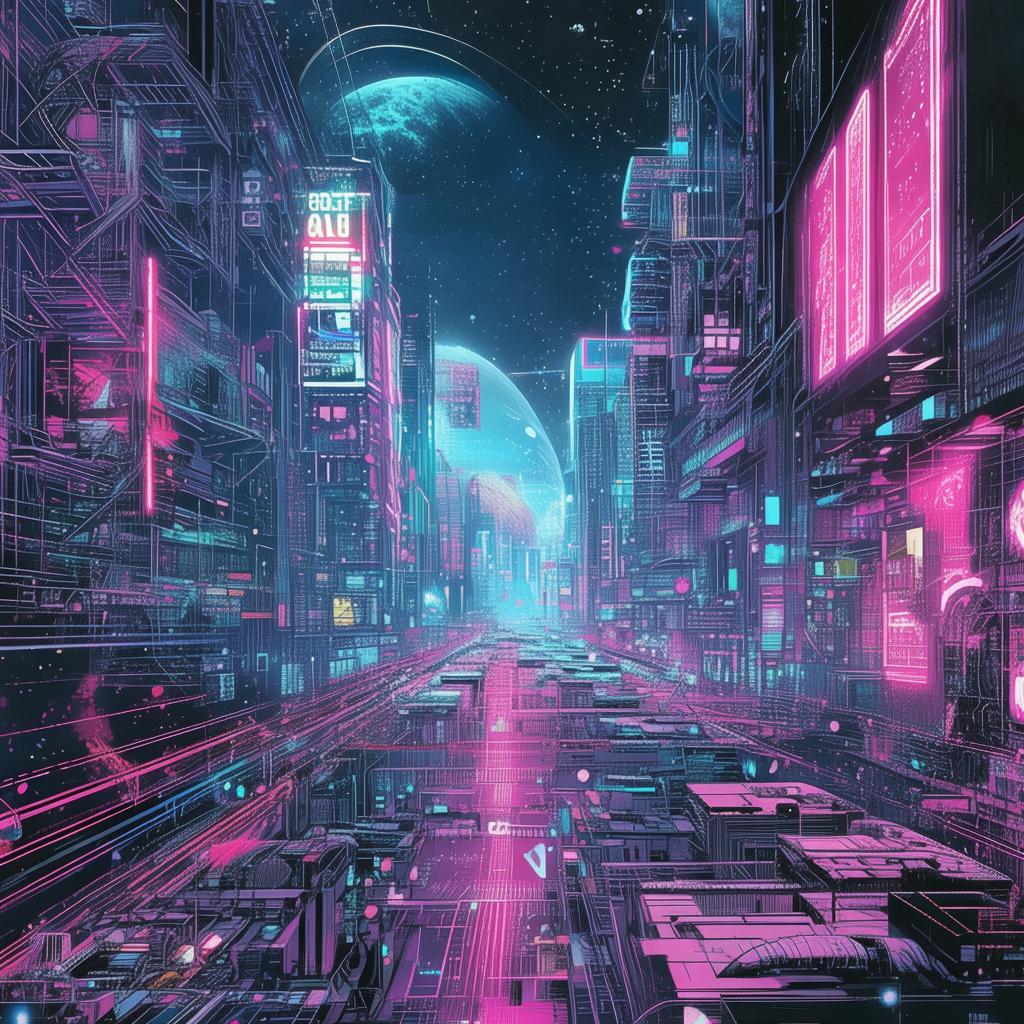The Sci-Fi Symphony of the Soul in the Stars' Celestial Chorus: A Futuristic Opera with a Sci-Fi Chorus
In the year 2147, the city of Neoterra stood as a beacon of human ingenuity, nestled within the vast expanse of the Andromeda Galaxy. It was here, amidst the towering spires and shimmering holographic displays, that the grand opera house, known as the Celestial Chorus, was located. This was no ordinary venue; it was a place where the music of the cosmos resonated with the melodies of human emotion.
The opera house was home to the most renowned ensemble of musicians, known as the Symphony of the Soul. Their performances were legendary, transcending the boundaries of terrestrial music to create a symphony that seemed to echo through the very fabric of space. The Symphony of the Soul was composed of four members: Elara, the maestro with a heart as vast as the universe; Kael, the virtuoso violinist whose strings could weave the most intricate tales of love and loss; Zara, the ethereal cellist whose touch could turn the night sky into a canvas of sound; and finally, Rion, the percussionist whose rhythms could stir the stars themselves.
The Symphony of the Soul was preparing for their most ambitious performance yet, "The Sci-Fi Symphony of the Soul in the Stars' Celestial Chorus: A Futuristic Opera with a Sci-Fi Chorus." The score was a marvel of modern composition, blending the complexities of classical music with the futuristic sounds of space. It was a testament to the human spirit's quest to understand the universe, and the symphony was the ultimate expression of that quest.
The night of the performance was electric with anticipation. The audience, a mix of alien dignitaries, interstellar travelers, and curious Neoterrans, filled the grand hall. The air was thick with the scent of anticipation, the hum of excited conversation, and the occasional whisper of a distant star.
As the lights dimmed, Elara took her place at the conductor's stand, her eyes scanning the crowd. She raised her baton, and the symphony began. The first movement was a gentle lullaby, a whisper to the cosmos, inviting the stars to listen. Kael's violin weaved a melody that felt like a river of light, flowing through the darkness of space.
The second movement was a tempest of sound, the music growing louder and more chaotic, reflecting the turmoil of the universe. Zara's cello sang of the pain and joy of creation, its notes echoing the birth and death of stars. Rion's percussion was a symphony of cosmic events, from the gentle tap of a comet's tail to the thunderous roar of a supernova.
As the third movement began, the music shifted to a dance, a celebration of life and the endless possibilities of the universe. The audience was caught up in the rhythm, their movements becoming part of the music itself. The hall was a whirlwind of color and sound, a cosmic ballet.
Then, as if the music itself had reached a crescendo, the fourth movement began. It was a symphony of the soul, a piece that spoke to the very essence of what it meant to be alive. The music was no longer just notes on a page; it was a living, breathing thing, connecting the musicians to the audience and the audience to the stars.
As the final notes rang out, the audience erupted into applause. The musicians bowed deeply, their faces alight with the joy of their creation. But as they walked off the stage, something strange happened. The music seemed to linger, not in the hall, but out in the cosmos. It was as if the symphony had reached beyond the walls of the opera house, into the very heart of the universe.
The next day, as the Symphony of the Soul returned to their practice room, they found something extraordinary waiting for them. The holographic displays on the walls of the room had come to life, showing a series of images from across the galaxy. In these images, they saw their symphony being performed, not in the Celestial Chorus, but in the vastness of space itself.
The music had traveled, not through sound waves, but through the very essence of the symphony itself. It was a discovery that changed everything. The Symphony of the Soul had not just created music; they had created a connection, a bond between the cosmos and humanity.

The discovery was profound. The music of the Symphony of the Soul was not just a reflection of the human soul; it was a reflection of the universe itself. Each note, each chord, was a piece of the cosmic puzzle, and the symphony was the key to unlocking its secrets.
The Symphony of the Soul continued to perform, but their performances were no longer just concerts. They were rituals, a way to honor the connection between humanity and the cosmos. The music they played was not just for the ears; it was for the soul.
In the end, the Symphony of the Soul realized that their true purpose was not just to play music, but to be a bridge between the stars and the Earth. Their symphony was a testament to the power of human creativity and the infinite possibilities of the universe. And as they continued to play, the music of the Symphony of the Soul became a part of the cosmic tapestry, a reminder that we are all connected, bound by the universal symphony of the soul.
✨ Original Statement ✨
All articles published on this website (including but not limited to text, images, videos, and other content) are original or authorized for reposting and are protected by relevant laws. Without the explicit written permission of this website, no individual or organization may copy, modify, repost, or use the content for commercial purposes.
If you need to quote or cooperate, please contact this site for authorization. We reserve the right to pursue legal responsibility for any unauthorized use.
Hereby declared.









